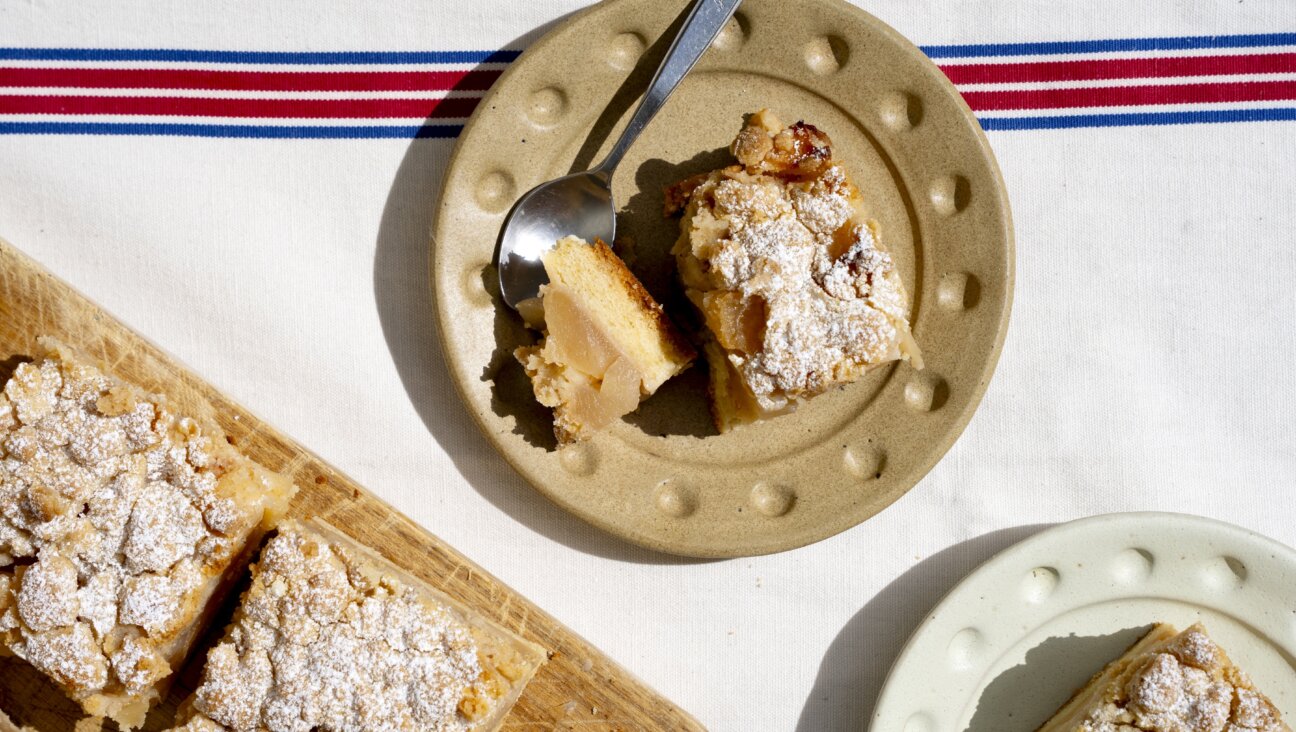Two Almond Recipes for Tu B’Shvat

Image by iStock
The date palm is tall and majestic. The olive tree locks oil in its plentiful fruit that anoints kings. The bountiful orange trees were the crown jewels of early Zionism. Yet it is the humble almond tree that grabs our attention when we celebrate the new year of the trees, Tu B’Shvat.
According to the Jewish calendar, the new year for trees begins on the 15th of the month of Av, or February 8th this year. Harkening back to the roots of Judaism which were tied to the agricultural cycles of the land of Israel, the holiday comes just as winter in the land of Israel looses its hold. Winter, with the heavy rains and the shortened days, can feel dreary and relentless. But early in the spring, the extraordinary white and pink blossoms of the almond tree dot the landscape, announcing the beginning of a new season, making almonds the perfect food to eat on Tu B’Shvat.
Through the generations, Jewish cooks have found use for the fruit of the almond tree. There are many Jewish dishes that use almonds, including cookies that are made with its paste — which when mixed with sugar is known as marzipan — or dishes that use almond flour to replace wheat flour.
In Israel it is common to serve dishes that highlight the seven biblical fruits and grains as well as the almond for Tu B’shvat. In order to have the full almond experience I have chosen to focus on two dishes that use almonds in their whole or sliced form, preserving the texture and bite as well as the flavor. These are dishes that translate the brightness of the almond tree into bold flavors and give hints of spring color as well. Both are a wonderful way to celebrate Tu B’Shvat.
The first recipe is for a variation of a madelbrot, literally Yiddish for almond bread. This recipe comes from Marcy Goldman’s Jewish Holiday Baking. Goldman, who runs Betterbaking, adds pomegranate molasses to the mix adding a particular depth to the flavor and a Mediterranean feel to these cookies. The original recipe calls for walnuts but I prefer them with sliced almonds.
The second recipe is a spring-inspired quinoa pilaf. I use red quinoa whose earthy tone is appropriate for an arbor day celebration. The bright greens of the parsley and cilantro bring forth the spring. The carrots and the cranberries add color while the small plentiful sesame seeds remind us the fertility to come as we plant in the spring. The almonds are essential. They add crunch and flavor pulling together this dish that needs no dressing.
For those of us in North America, Spring can feel far away at the start of February but as we celebrate Tu B’shvat, we can turn our hearts and stomachs to the fruits of the almond tree and the forthcoming spring they represent.
Pomegranate and Sour Cherry Mandelbrot
Adapted from Marcy Goldman’s “A Treasury of Jewish Holiday Baking: 10th Anniversary Edition”
Makes 2 dozen
1/2 cup vegetable oil
1/4 cup pomegranate molasses
3 tablespoons honey
1 cup sugar, plus extra for sprinkling
1 teaspoon vanilla extract
3 eggs, lightly beaten
3 cups all-purpose flour
1 3/4 teaspoons baking powder
1/4 teaspoon salt
1/4 teaspoon cinnamon
1 cup sliced toasted almonds
3/4 cup dried sour cherries, plumped in warm water, then drained and dried
1 egg white, beaten
1) Heat the oven to 325 degrees. Line a baking sheet with parchment paper.
2) In a medium bowl, Whisk together the oil, pomegranate molasses, honey, sugar and vanilla. Whisk in the beaten whole eggs. Stir in the flour, baking powder, salt, cinnamon, walnut halves and dried cherries.
3) Spoon out 2 loaves of the dough about 8-by-3- or 4-inches wide. Brush the top with the egg white, then sprinkle with sugar.
4) Bake until the top of the dough seems firm and dry, about 25 to 35 minutes. Remove from the oven and reduce heat to 300 degrees.
5) Carefully slide the mandelbrot off the baking sheet and cut them crosswise into slices 3/4 inch thick. Place a wire cooling rack over the baking sheet, then arrange the mandelbrot slices on it. Bake for another 20 to 30 minutes, or until crisp and dry.
If you want to add a festive touch and capture the spirit of the almond tree, in step three consider replacing sugar with a combination of white and pink sprinkles.
Tu B’Shvat Pilaf
2/3 cup red quinoa (if you cannot find red, white is fine)
1/2 cup dried cranberries, plumped in hot water and drained
1 cup carrots, grated coarsely
1 medium sweet onion
1 small bunch of cilantro
1 small bunch of flat Italian parsley
2 tablespoon sesame seeds, roasted
½ cup slivered almonds raw
1) Rinse quinoa then put in pot with water and bring to a boil. Cover and reduce heat to a simmer. Simmer until all water is absorbed approximately 15 minutes.
2) Remove quinoa from heat and fluff with fork. Let it cool.
3) While quinoa is cooking and cooling, prepare the rest of the ingredients. Toast sesame seeds and almonds separately. Grate carrots. Dice onions and mince herbs.
4) Once all ingredients are ready and the quinoa is cool, mix all but the almonds together in a large bowl.
5) When ready to serve add almonds and toss.
Rabbi Ruth Abusch-Magder PhD is the Rabbi-in-Residence at Bechollashon.org and can be found on twitter @rabbiruth.

















